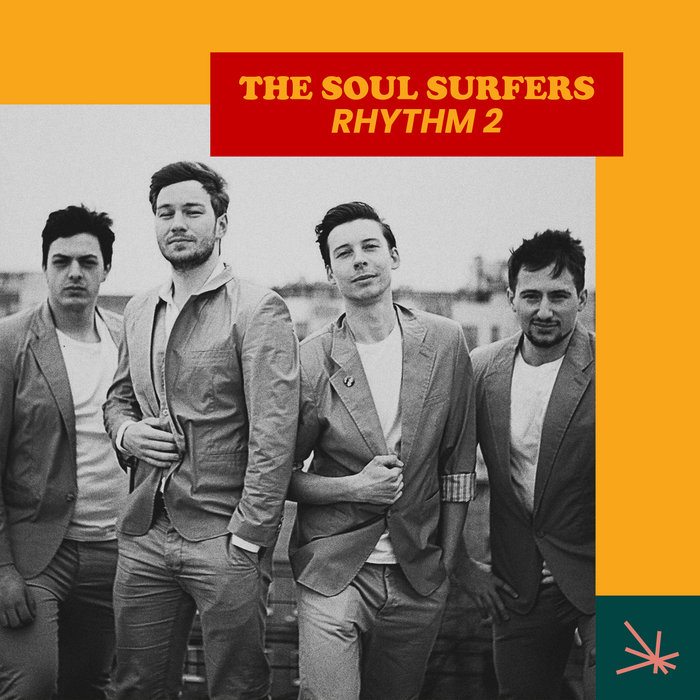
The Soul Surfers – Rhythm 2 – Golden Rules
this blog is GROOVY – check out great Soul, Funk, Jazz, Hip Hop, Bass, Breaks , Reggae, House n many more TUNES
Hey there, music lovers! Let’s take a funky ride through the vibrant history of synth music. Grab your headphones and buckle up because we’re diving into the electric world of synthesizers, their pioneers, and some quirky tales along the way!
It all started back in the 1920s when an inventor named Léon Theremin created the Theremin, one of the first electronic instruments. This gadget was played without physical contact—just wave your hands around antennas to create eerie sounds! Imagine performing at a party and giving everyone goosebumps with those otherworldly tones.
Fast forward to the 1960s where things really began heating up. Pioneers like Bob Moog popped onto the scene with his legendary Moog synthesizer. Musicians were like kids in a candy store! Suddenly, artists such as Kraftwerk, known for their robotic beats and futuristic vibes, began to emerge as key players in this new sound.
The ‘70s saw an explosion of synth use across genres—from rock to pop to disco. Bands like Pink Floyd brought that psychedelic synth vibe into mainstream consciousness with albums like Dark Side of the Moon. Meanwhile, funkadelic groups strummed hearts with tracks powered by what else? You guessed it—the synthesizer!
In come the ‘80s; everything got even groovier. It was all about layering those catchy melodies over synthesized bass lines. Enter icons like Depeche Mode and Duran Duran, who made synth-pop a household name (and not just by naming fancy salads). Remember “Hungry Like The Wolf”? Well, these guys weren’t kidding—those catchy hooks were enough to make you dance until dawn!
Now let’s sprinkle in some humorous nuggets about our beloved synth musicians:
Kraftwerk’s Robot Love: Kraftwerk was so obsessed with robots they once had concert attendees pay for tickets using their robotic arm robots instead of cash! Talk about high-tech ticketing!
Gary Numan’s “Cars”: Gary Numan wrote “Cars” after being inspired by feeling trapped while driving his car stuck behind trucks on UK roads during rush hour! Who knew road rage could inspire such iconic tunes?
The Dark Side Of Playlists: Many fans have speculated that Depeche Mode may be part-cyborg due to how smoothly they transitioned from dark tracks to super upbeat jams throughout their career—a true testament to synthetic versatility!
Jean-Michel Jarre: Outdoor Concert Extraordinaire: French composer Jean-Michel Jarre threw an outdoor concert attended by over 2 million people in Paris on Bastille Day in 1990…can you imagine trying to get everyone’s attention with just a synthesizer amid that crowd?!
Synthesizers Under Water? So here’s a wild fact: In 1979, musician Don Buchla invented underwater musical performances using buoys equipped with sensors connected directly via cables into his synthesizers—thank goodness for waterproof gear!
As technology advanced into digital realms during late ‘80s and early ‘90s (hello MIDI!), artists embraced digital sampling which opened doors wide open—allowing them access not only classic synthesized sounds but also real instrument samples too.
This magic is epitomized perfectly by bands like The Prodigy blending punk energy infused electronic beats forging new paths ahead within techno/trance/whatever-in-between madness! They took everything we loved about earlier styles then spun them upside down giving us hits like “Firestarter”! 🔥
Fast forward again through time jump cuts arriving firmly planted here today—it feels weird yet wonderful watching today’s artists still carry forth legacy mixed-up layered textures enshrouded rich harmonic vibes within contemporary genres from hip-hop loops infusing ambient chill-wave dreamscapes seamlessly blended together snuggled right beside booming trap drops intense dubstep thunderous rumbles vibrating our souls making us feel alive once more!
Artists are now tweaking modules & plugins emulating old-school machines breathing fresh air life back threading stories weaving nostalgia reminiscing sound bytes pulling threads delightfully taking listeners through experiences past–present–future forever evolving each moment synchronized dancing rhythmically between dreams exploring sonic landscapes expanding minds along every beat pulse-driven journey onward displaying decades worth sheer joy soaring higher flying free underneath surreal skies above pulsing light shimmering before fading back slowly beckoning towards next adventure awaiting bright horizons breaking dawn…
Synth music has undeniably shaped our auditory landscape over decades challenging conventions inspiring innovation fostering creative expressions uniting generations beneath roaring waves radiating blissful harmonics swaying souls elevating spirits celebrating life itself everywhere we roam slipping effortlessly amidst grooves catching fleeting moments blissed out vibe-filled extravaganzas painting colorful tapestries emotions blossoming lovingly dancing flowing transitions timeless echoes resonate forevermore penetrating deep inside hearts connected through wires sparking magic straight electrifying connections all shared collectively enjoying rhythms keeping our fires burning bright glowing hopeful gleaming bouncing together vibrationally living glorious harmonic existence — Here’s To Synth Music 🎉✨

The Soul Surfers – Rhythm 2 – Golden Rules